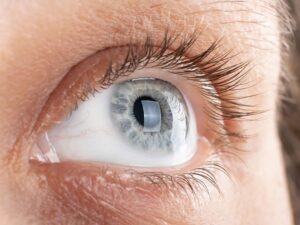Cornea transplant (keratoplasty)
The cornea is the name given to the transparent structure in the outermost part of the eye, which has the task of focusing light and protecting the eye. After the rays arriving at the eye have first passed through the cornea, they reach the retinal layer and vision is provided. Therefore, the transparency of the cornea is very important for seeing. Cornea transplant surgery, known among people as eye transplantation, is actually the replacement of the corneal layer of the eye, the transparency of which has been compromised due to various diseases, with a healthy donor (donor) cornea .
 The transparency of the cornea can be compromised by many diseases. Causes such as microbial or genetic diseases, corneal lesions, corneal edema that does not improve after cataract surgery can impair corneal transparency, the patient cannot see clearly. Keratoconus, on the other hand, may require corneal transplant surgery by compromising the shape, transparency, and vision of the cornea in the advanced stages of the disease. Vision can be regained by transplanting a healthy corneal layer. Symptoms such as pain and discomfort due to corneal disease improve after corneal transplantation. The surgery can be performed under local or general anesthesia. Problem corneal tissue, which has lost its transparency or is deformed, is removed with special tools such as a full layer, and a tissue of the same size is prepared from the donor’s healthy cornea and transferred to the patient under a microscope and placed in the eye with the l help of very fine threads. The donor cornea is sutured to the recipient cornea with 16-20 single threads or with a single continuous suture or using both methods together. The duration of the operation is approximately 45 minutes. If there
The transparency of the cornea can be compromised by many diseases. Causes such as microbial or genetic diseases, corneal lesions, corneal edema that does not improve after cataract surgery can impair corneal transparency, the patient cannot see clearly. Keratoconus, on the other hand, may require corneal transplant surgery by compromising the shape, transparency, and vision of the cornea in the advanced stages of the disease. Vision can be regained by transplanting a healthy corneal layer. Symptoms such as pain and discomfort due to corneal disease improve after corneal transplantation. The surgery can be performed under local or general anesthesia. Problem corneal tissue, which has lost its transparency or is deformed, is removed with special tools such as a full layer, and a tissue of the same size is prepared from the donor’s healthy cornea and transferred to the patient under a microscope and placed in the eye with the l help of very fine threads. The donor cornea is sutured to the recipient cornea with 16-20 single threads or with a single continuous suture or using both methods together. The duration of the operation is approximately 45 minutes. If there
are other interventions to be performed at the same time, the duration of the operation can be extended. • Patients are followed up with checks on the 1st day, 1st week, 1st month and then monthly. • Antibiotic and cortisone drops are used in the treatment. • A clear cover is used after surgery for eye protection. • There may be ailments such as burning and watering for a few weeks. • Care is recommended to protect the eye from injury and trauma. • Patients’ one-year period is closely followed and it is important that they apply drug therapy correctly.


